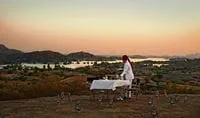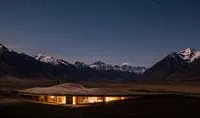Our Guide to the Himalayas
Meaning ‘Abode of the Snow’, the Himalayan Range stretches over 1,500 miles from the Nanga Parbat in Pakistan to the Tsango River in China. Taking in India, Nepal, Bhutan and Tibet, there are countless amazing views to be found as well as the remarkable local people and culture that flourishes on its foothills throughout its range.

Whether you want to trek, head to a spa retreat, do a heli-safari, or immerse yourself in the culture, our specialist Himalayan experts at Scott Dunn have travelled the length and breadth of these incredible mountains. Here is a little guide that will help you start planning your itinerary.
When to go
We are always asked about the weather in the Himalayas and when is the best time to go. The foothills of the Himalayas in India, Nepal and Bhutan are affected by the Indian Monsoon, so from late June to the end of September there will be rain and mist, so it is best not to go. Once the Monsoon breaks, the views are incredible in October and November. It is colder in December and January, but the views are perfect and less people visit so you very much have the destination to yourself. The spring is another great season, and you can expect Rhododendrons to brighten up the mountain paths. It can get a little misty later in the day, and this builds up more and more towards the outbreak of the Monsoon in June. The Monsoon, however, does not pass over the High Himalayan peaks – and so the High Altitude Tibetan Plateau is arid and perfect to visit in the summer from May to October when temperatures are warmer at the higher altitudes. So that means Ladakh in India, Mustang in Nepal and Tibet are only open during this time.
Altitude
Another question that we get asked is about is altitude. Generally, most treks in Nepal, India and Bhutan are at a lower altitude (under 3000m / 10000ft) so altitude is not a problem. When you go above this, you do need to acclimatise. This means the higher Everest Base Camp Trek, Ladakh & Tibet do mean travelling to higher altitudes. Your doctor can advise you on various medications that can help, and we always plan treks and itineraries that take you up slowly and sensibly. An old wives tale we learnt in Nepal is that garlic and drinking lots of water is worthwhile!
How to get there
Do note that many of the Himalayan regions are not serviced by direct flights from the UK – you can fly via the Middle East to Kathmandu in Nepal, but for the Indian Himalayas you can often expect a layover day in Delhi. For Bhutan, there are flights from Delhi, Kathmandu, Bangkok, Calcutta and Singapore (and this generally means a night stopping over on the way out and back).
Trekking in the Himalayas
The great joy of the Himalayas is walking through the stunning villages that are often perched under amazing mountain peaks. Whether you want a few days of easy walking, to treks that take you far off the beaten track, we can offer an experience that meets your requirements.
- Annapurna Trek, Nepal: a really good 4-5 day walk under one of the most stunning mountain ranges. Pretty thatched villages.
- Annapurna Base Camp, Nepal: There isn’t a better view of walking into the Annapurna Sanctuary and seeing some of the highest mountains in the world all around you.
- Everest Base Camp: The ultimate Himalayan trek. We like to take you up on foot, and then helicopter you back to save on the days spent walking back along the same path. Expect a guide who has climbed Everest and you will be staying in luxury lodges.
- Kumaon, India: A perfect village walk staying in luxury village houses which have been updated top retain their original architecture but with first-class bedrooms and bathrooms. The houses are only taken exclusively so you only see this part of India. For the best views you can possibly imagine, end in 360 Leti.
- Ladakh: Located in Northern India, but it is situated on what is known as the Tibetan Plateau so does not get affected by the monsoon. This means it is perfect from May to late September. The culture is largely Tibetan – think Buddhist Monasteries, stunning landscapes and you stay in luxury village houses, off the beaten track, or the new Ultimate Travelling Camp positioned right under Thiksey Monastery.
- Sikkim: Sandwiched between Bhutan and Nepal, this corner of India was independent until the 1970s and is stunningly beautiful and again Tibetan. There are similar luxury village houses as you get in Ladakh and Kumaon, but you can easily tag on a stay in Darjeeling, Glenburn Tea Estate or combine with Bhutan.
Call us on 212 372 7009 to start planning your holiday
Why Scott Dunn?
Unique to You

- We listen to your travel goals and craft unique trips that are bespoke to you.
- We’re with you every step of your life’s travel journey, from honeymoons to family trips and beyond.
Seamless Service

- Global offices in the UK, US, and Singapore for 24/7 seamless service.
- We offer flexibility if your plans change so you can book with confidence and peace of mind.
Carefully Curated Collection

- We’ve curated an elevated collection of accommodation, experiences, and guides.
- Committed to fostering close global relationships to continue bringing you unique experiences.
Luxury in Every Sense

- We deliver a sense of luxury that matters most to you.
- Awarded Condé Nast Traveller’s Top Travel Specialists in the World 12 years in a row.

